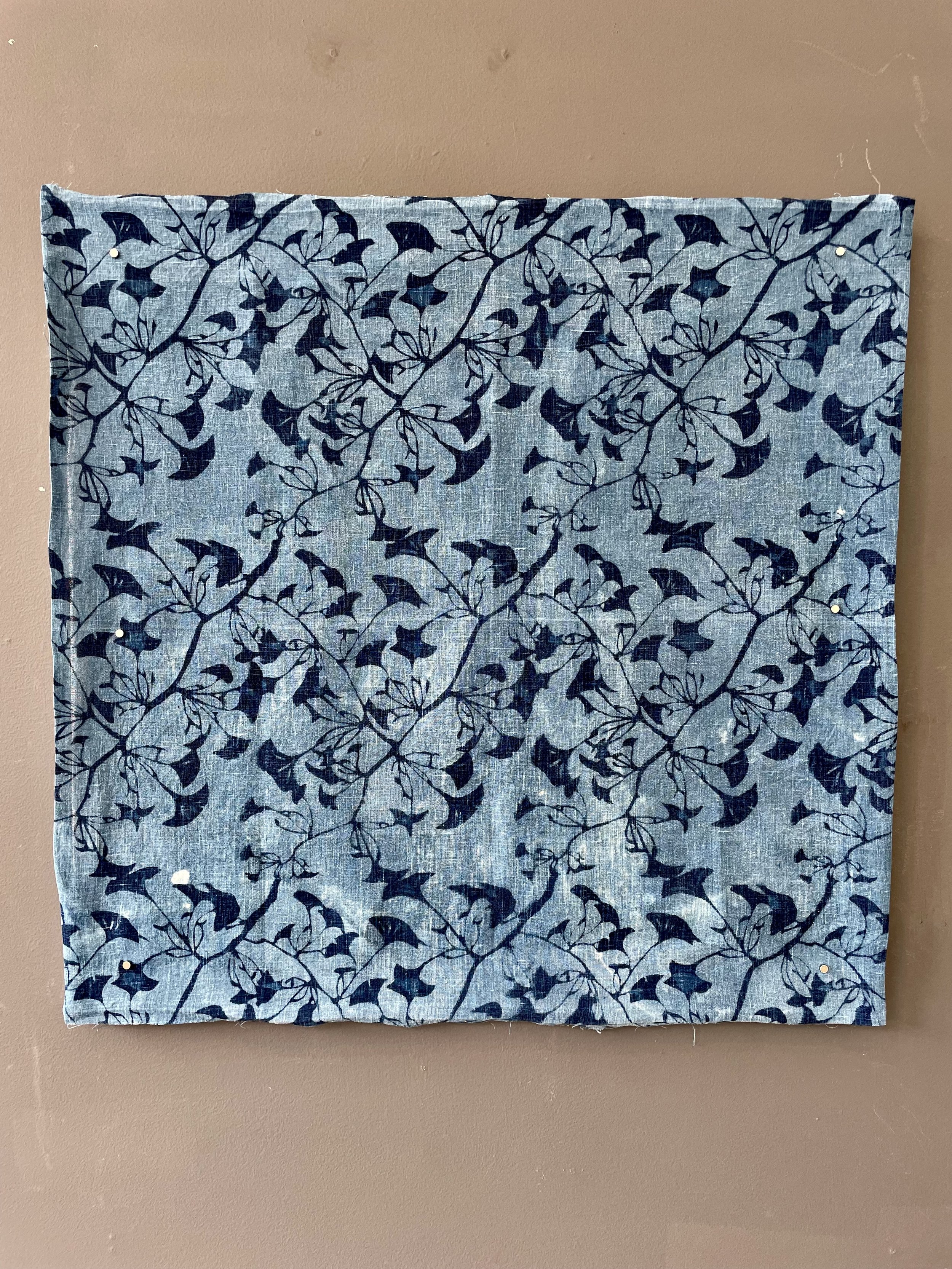Berkley Heath
Berkley Heath
Studio Location: Claremont, New Hampshire
Title of Piece: evening ginkgo
Materials Used: Indigo (Persicaria tinctoria, Indigofera tincoria), mostly homegrown Persicaria, the vat also contained pigment from Stony Creek Colors in Tennessee, on linen. Treated with fresh soy milk
Price: 200
Primary Techniques: Rice paste resist applied with stencil.
Type of Vat: Fermentation vat
Other Applications:
Artist Bio: Berkley Heath has lived between Maine, New Hampshire, and Vermont all her life, becoming more enchanted with and inspired by the landscape with every passing season. With a background in organic vegetable farming and herbalism, she works with homegrown and foraged dyes and pigments primarily on textiles. She is fascinated by material, history, and process as much as a finished piece, and many days are spent seeding, harvesting, and creating art materials. Her interest in traditional materials and craft has recently expanded to include carpentry, and she in currently restoring an old house in Claremont, New Hampshire.
Artist Statement about Piece: The life of a tree, from a sprout converting atmospheric carbon for decades and centuries and more until it becomes a towering giant, until it finally becomes food for other organisms or organic matter for the soil or maybe is made into a bowl or a violin or paper, is a slow process for a person to perceive. I love a tree that captures the attention, not just of naturalists, but of anyone walking down the street, and the ginkgo is just that. In the time of dinosaurs and megafauna the Ginkgo genus covered the Earth, the oldest fossil records date 290 million years ago. In early human history Ginkgo was reduced to just one species (the Ginkgo biloba that we know) in southern China, where it was cultivated and used in traditional Chinese medicine. Ginkgo is now commonly planted internationally, especially in urban areas where their resilience and resistance to pollution and disease lend a hand.
I'm familiar with this plant, but am always captivated by them, and I notice that others are as well. They're just so different from most of the basic coniferous and deciduous trees whose patterns we've learned. There's something a little alien in the arc of the leaves, in the fanning out of the veins, and they beg the question: where did this come from? Their leaves emerge, delightfully, right from the branch and trunk. I focused on these lovely patterns in my design, tracing the birth of the leaf, as it seems, from a mere hint of a sprout to its full fan blossom. What can we learn by slowing down to consider the life of this strange creature? How can we let it teach us how to age with grace and wisdom.
Artists of the Matrix - LInks
Rosa Sung Ji Chang - Baltimore, MD
Catharine Ellis - Waynesville, NC
Debra Ketchum Jircik - Eagle River, WI
Scott C Johnson - Cannon Beach, OR
Marian Martínez González- Basque Country, Spain
Madeline McGarrity - Andover, NJ
Bernadette Puleo - Dix Hills, NY



